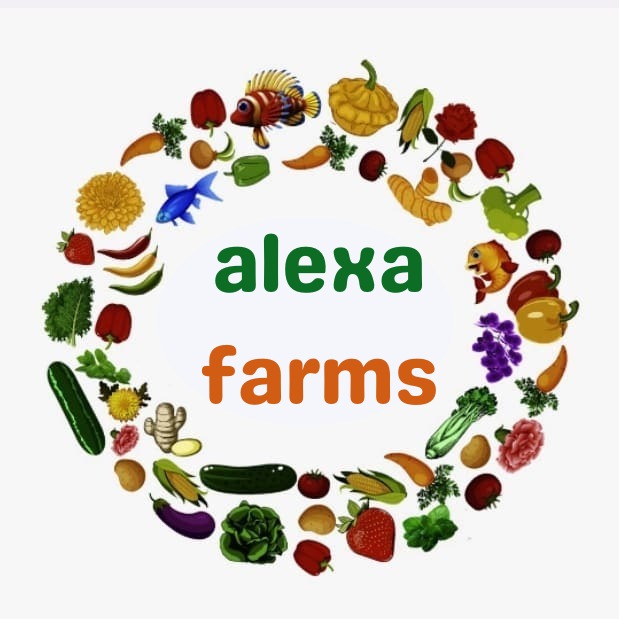Turmeric
What Is Vertical Farming?
Vertical farming is the practice of producing food on vertically inclined surfaces. Instead of farming vegetables and other foods on a single level, such as in a field or a greenhouse, this method produces foods in vertically stacked layers commonly integrated into other structures like a skyscraper, shipping container or repurposed warehouse.
Using Controlled Environment Agriculture (CEA) technology. The artificial control of temperature, light, humidity, and gases makes producing foods and medicine indoor possible. In many ways, vertical farming is similar to greenhouses where metal reflectors and artificial lighting augment natural sunlight. The primary goal of vertical farming is maximizing crops output in a limited space.
How Vertical Farming Works
There are four critical areas in understanding how vertical farming works: 1. Physical layout, 2. Lighting, 3. Growing medium, and 4. Sustainability features.
Firstly, the primary goal of vertical farming is producing more foods per square meter. To accomplish this goal, crops are cultivated in stacked layers in a tower life structure. Secondly, a perfect combination of natural and artificial lights is used to maintain the perfect light level in the room. Technologies such as rotating beds are used to improve lighting efficiency.

Thirdly, instead of soil, aeroponic, aquaponic or hydroponic growing mediums are used. Peat moss or coconut husks and similar non-soil mediums are very common in vertical farming. Finally, the vertical farming method uses various sustainability features to offset the energy cost of farming. Vertical farming uses 95 percent less water.
Advantages of Vertical Farming
- Preparation for Future: By 2050, around 80 percent of the world population is expected to live in urban areas, and the growing population will lead to an increased demand for food. The efficient use of vertical farming may perhaps play a significant role in preparing for such a challenge.
- Increased And Year-Round Crop Production: Vertical farming allows us to produce more crops from the same square footage of growing area. In fact, 1 acre of an indoor area offers equivalent production to at least 4-6 acres of outdoor capacity. According to an independent estimate, a 30-story building with a basal area of 5 acres can potentially produce an equivalent of 2,400 acres of conventional horizontal farming. Additionally, year-round crop production is possible in a controlled indoor environment which is completely controlled by vertical farming technologies.
- Less Use Of Water In Cultivation: Vertical farming allows us to produce crops with 70-95 percent less water than required for normal cultivation.
- Not Affected By Unfavourable Weather Conditions: Crops in a field can be adversely affected by natural calamities such as torrential rains, cyclones, flooding or severe droughts—events which are becoming increasingly common as a result of global warming. Indoor vertical farms are less likely to feel the brunt of the unfavorable weather, providing greater certainty of harvest output throughout the year.
- Increased Production of Organic Crops: As crops are produced in a well-controlled indoor environment without the use of chemical pesticides, vertical farming allows us to grow pesticide-free and organic crops.
- Human and Environmentally Friendly: Indoor vertical farming can significantly lessen the occupational hazards associated with traditional farming. Farmers are not exposed to hazards related to heavy farming equipment, diseases like malaria, poisonous chemicals and so on. As it does not disturb animals and trees inland areas, it is good for biodiversity as well.
Introduction of Turmeric
Turmeric (Curcuma longa L), the ancient and sacred spice of India known as ‘Indian saffron’ is an important commercial spice crop grown in India. It is used in diversified forms as a condiment, flavoring and coloring agent and as a principal ingredient in Indian culinary as curry powder. It has anti cancer and anti viral activities and hence finds use in the drug industry and cosmetic industry. ‘Kum-kum’, popular with every house wife, is also a by-product of turmeric. It finds a place in offerings on religious and ceremonial occasions. A type of starch is also being extracted from a particular type of turmeric. The increasing demand for natural products as food additives makes turmeric as ideal produce as a food colorant.
Turmeric is the dried rhizome of Curcuma longa L., a herbaceous perennial belonging to the family Zingiberaceae and a native of South Asia particularly India. The plant is propagated from rhizomes. The leaves are long, broad, lanceolate and bright green. The flowers are pale yellow and borne on dense spikes. The pseudo-stems are shorter than leaves. The rhizomes are ready for harvesting in about 7 to 9 months after planting.

National Scenario
Indian turmeric is considered the best in the world market because of its high cur cumin content. India exported 5150 tones of turmeric valued at Rs.164.80 crores during 2006-07. From India’s total turmeric exports, 65% exported to UAE, USA, Japan, Sri lanka, UK, and Malaysia. The institutional sector in the West buys ground turmeric and oleoresins, while dry turmeric is preferred by the industrial sector. Turmeric is available in two seasons in India i.e., February to May and August to October. The various varieties of turmeric that are traded in India are Alleppey Finger ( Kerala), Erode Turmeric (Tamil Nadu), Salem Turmeric (Tamil Nadu), Rajapore Turmeric (Maharashtra), Sangli Turmeric (Maharashtra), Nizamabad Bulb ( Andhra Pradesh) etc. The major trading centres of turmeric are Nizamabad, Dugirala in Andhra Pradesh, Sangli in Maharashtra and Salem, Erode, Dharmapuri and Coimbatore in Tamil Nadu.
Organic farming
Organic farming is a crop production method which encourages sustainable agriculture by enhancing the biological cycles in nature. It is targeted at producing healthy, nutritive, pollution free food maximising the use of on farm resources and minimising the use of off-farm resources. It seeks to avoid the use of chemical nutrients and pesticides.
Varieties
A number of cultivars are available in the country and are known mostly by the name of the locality where they are cultivated. The cultivated varieties show considerable variation in size and color of the rhizomes and cur cumin content. More than 5 per cent cur cumin content and lemon yellow, orange or orange yellow colored turmeric powder are preferred in the international market. There are two dominant types of turmeric found on the world market: ‘Madras’, and ‘Alleppey’, both named after the regions of production in India. The orange-yellow flesh Alleppey turmeric is predominantly imported by the United States, where users prefer it as a spice and a food colorant. Alleppey turmeric contains about 3.5% to 5.5% volatile oils, and 4.0% to 7.0% curcumin. In contrast, the Madras type contains only 2% of volatile oils and 2% of cur cumin. The Madras turmeric is preferred by the British and Middle Eastern markets for its more intense, brighter and lighter yellow color. The Patna variety is noted for its deep color. Of the two types cultivated in Maharashtra, ‘Lokhandi’ has bright colored hard rhizomes and the other has light-coloured soft rhizomes.

The popular commercial varieties in Andhra Pradesh are ‘Duggirala’ of Guntur and ‘Tekurpeta’ which has long, stout, smooth and hard fingers. ‘Kasturi Pasupa’ of the Godavari Delta, the ‘Armoor’ type of the Nizamabad area and the ‘Chaya Pasupa’ are the other important varieties of Andhra Pradesh. In Orissa important varieties cultivated are Roma, Suroma, Ranga and Rasmi. Lakadong variety of ginger is grown in Meghalaya and this variety is popular for high curcumin content of 5 to 5.05%. A new variety named CIM-Pitamber is available for commercial cultivation. Scientists at the Lucknow-based Central Institute for Medicinal and Aromatic Plants, CSIR-CIMAP conducted extensive research for eight years to identify and finally develop the high yielding variety. An average yield of 50 tonnes of rhizomes/ha, containing more than 10 per cent curcuminoids has been demonstrated in multi-centre field trials.
Maintenance Tips
Install a trunk guard at the base of the tree to keep works its seds nutrient and water system from being cut. Trunk ours guards also …
Install a trunk guard at the base of the tree to keep works its seds nutrient and water system from being cut. Trunk ours guards also…
Install a trunk guard at the base of the tree to keep its nutrient andwater system from being cut. Trunk guards also protect trees from rodents and other small animals.
Customer Feedback
Talented Agronomist
Team Alexa made my Poly-House very well & also helped by assisting in organic Framing. Thanks & All the Best for the future.
Ms. Poonam Saxena, Indore (M.P.)
landownerExcellent job, excellent workmanship
Currently, Team Alexa helping me on Orchid Cultivation in Poly house. I’ve have to say till now everything is good and expecting the same for future.
Mr. Rajendra singh , Indore (M.P.)
landownerGreat ! Work
I would suggest Alexa Farms for Poly house Farming , Hi Tech Farming Organic Farming because there professionals have knowledge for all the crops.
Mahant Dharmendra Puri, Indore
landownerDone Wonderful job
Amazing design and installation of our new, beautiful yard. Gardener is professional, creative and knowledgeable designer.
Mark Angelino
NewyorkPlanting & Removal Charges
Within a your budget you can freshen up your plant with a few key upgrades that will increase your home’s curb appeal. A new gravel driveway or concrete walkway can make your home look like new. Small budgets are good for breaking up a larger project into manageable chunks, so you might splurge for a nice walkway this year and deal with the driveway later.










Information about vertical farming
Hi, Shardul Shah from Bhopal. I am interested into vertical turmeric farming and need guidance and consultancy for the same. How may we proceed on this? Let me know. Regards.
I have 12 acre Land I want to do Turmeric vertical farming. Need consultant or guidance as per your terms